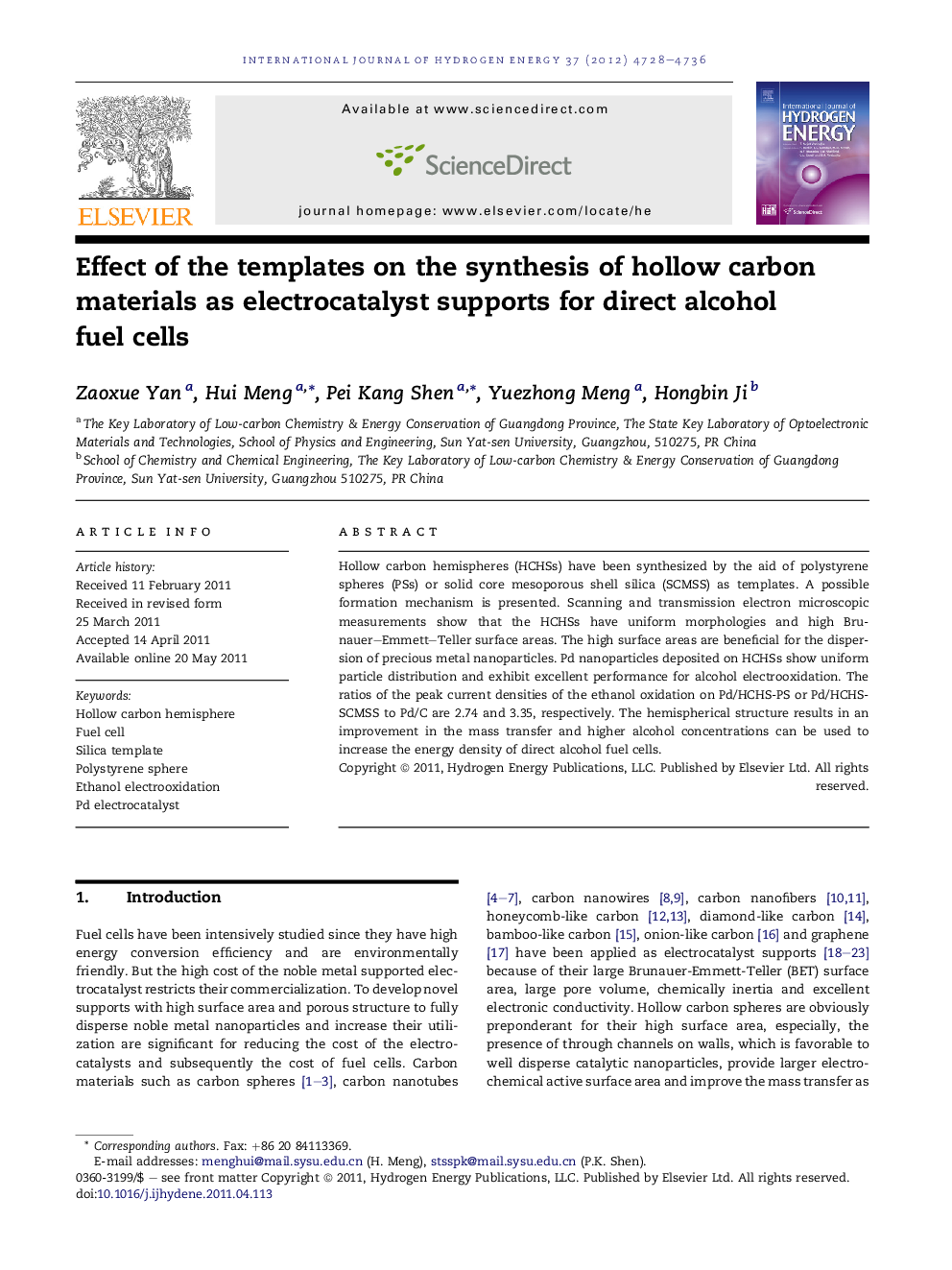| Article ID | Journal | Published Year | Pages | File Type |
|---|---|---|---|---|
| 1275539 | International Journal of Hydrogen Energy | 2012 | 9 Pages |
Hollow carbon hemispheres (HCHSs) have been synthesized by the aid of polystyrene spheres (PSs) or solid core mesoporous shell silica (SCMSS) as templates. A possible formation mechanism is presented. Scanning and transmission electron microscopic measurements show that the HCHSs have uniform morphologies and high Brunauer–Emmett–Teller surface areas. The high surface areas are beneficial for the dispersion of precious metal nanoparticles. Pd nanoparticles deposited on HCHSs show uniform particle distribution and exhibit excellent performance for alcohol electrooxidation. The ratios of the peak current densities of the ethanol oxidation on Pd/HCHS-PS or Pd/HCHS-SCMSS to Pd/C are 2.74 and 3.35, respectively. The hemispherical structure results in an improvement in the mass transfer and higher alcohol concentrations can be used to increase the energy density of direct alcohol fuel cells.
► Hollow carbon hemispheres with high surface area are synthesized. ► Pd nanoparticles are deposited on the hemispheres to form catalysts. ► The Pd/HCHS exhibits excellent performance for alcohol electrooxidation. ► The structure improves the mass transfer for high alcohol concentrations.
